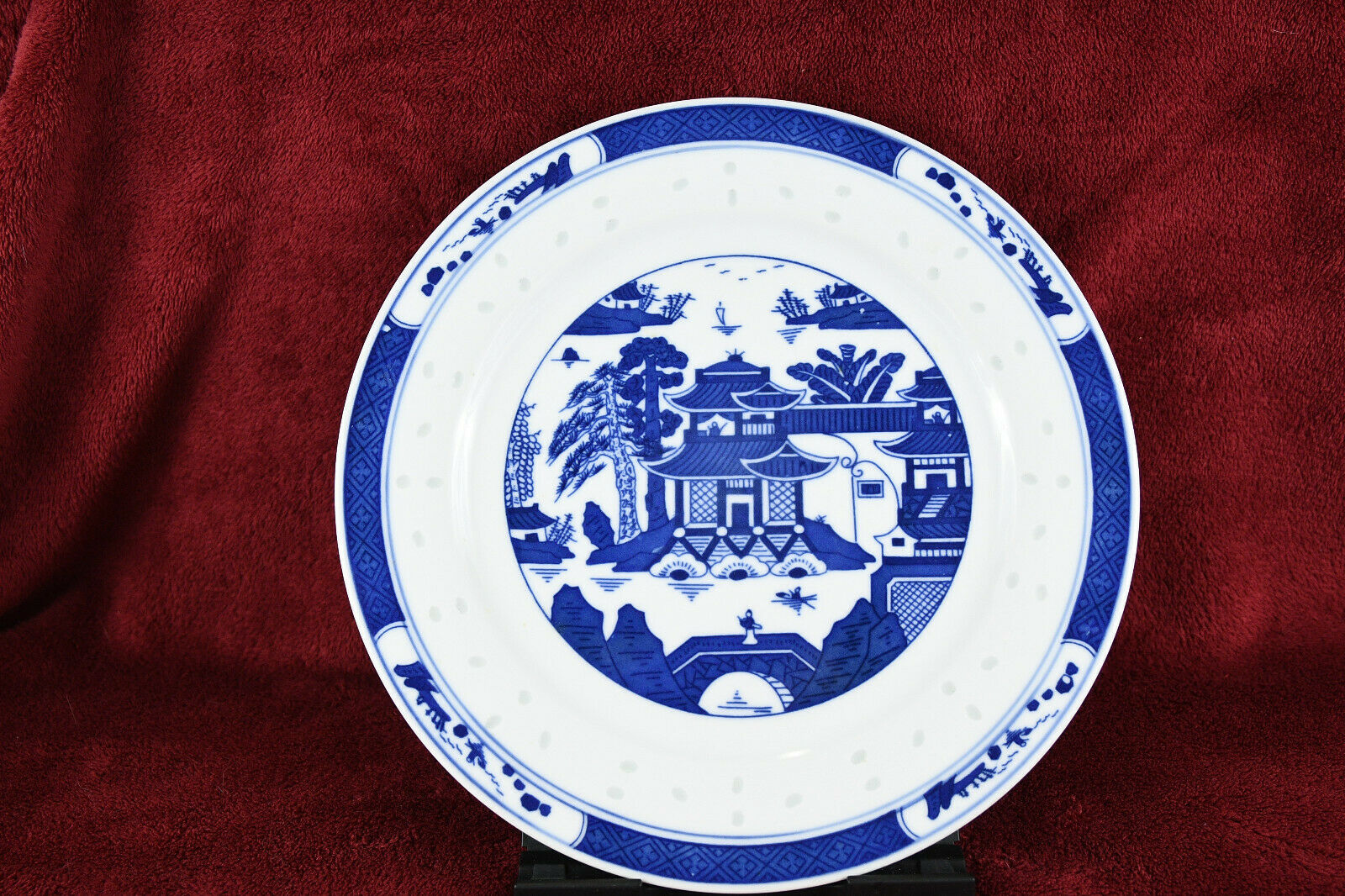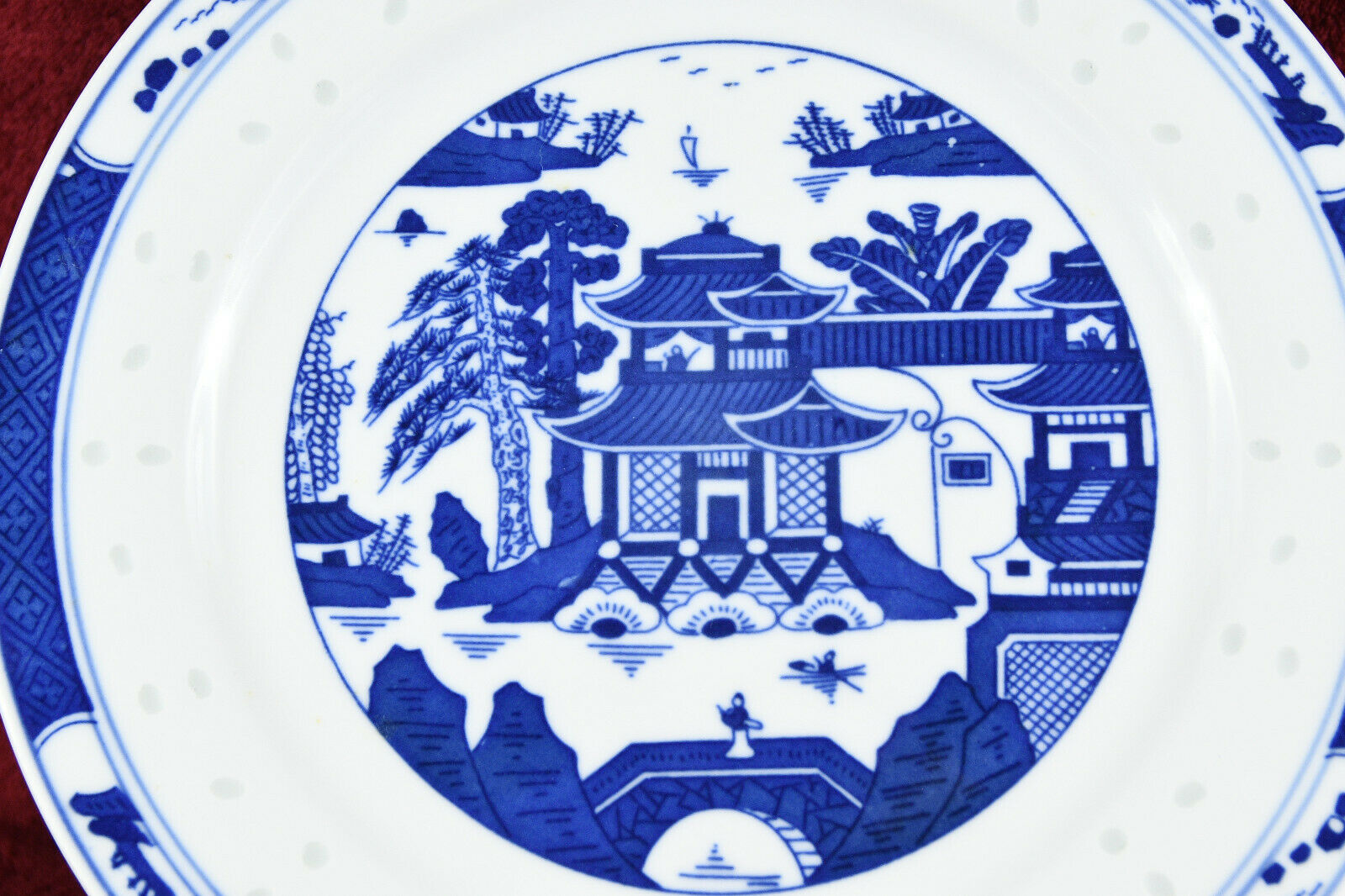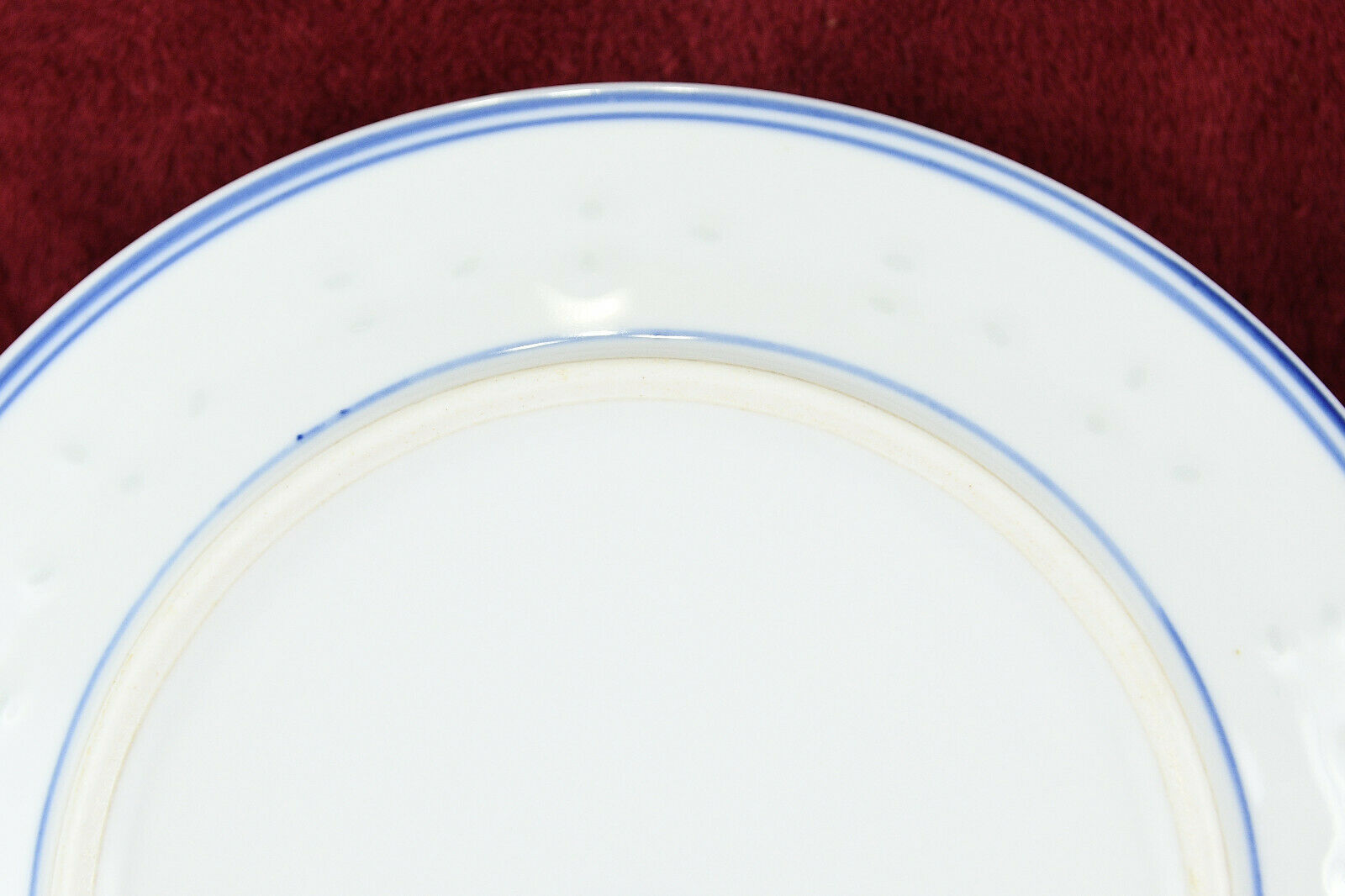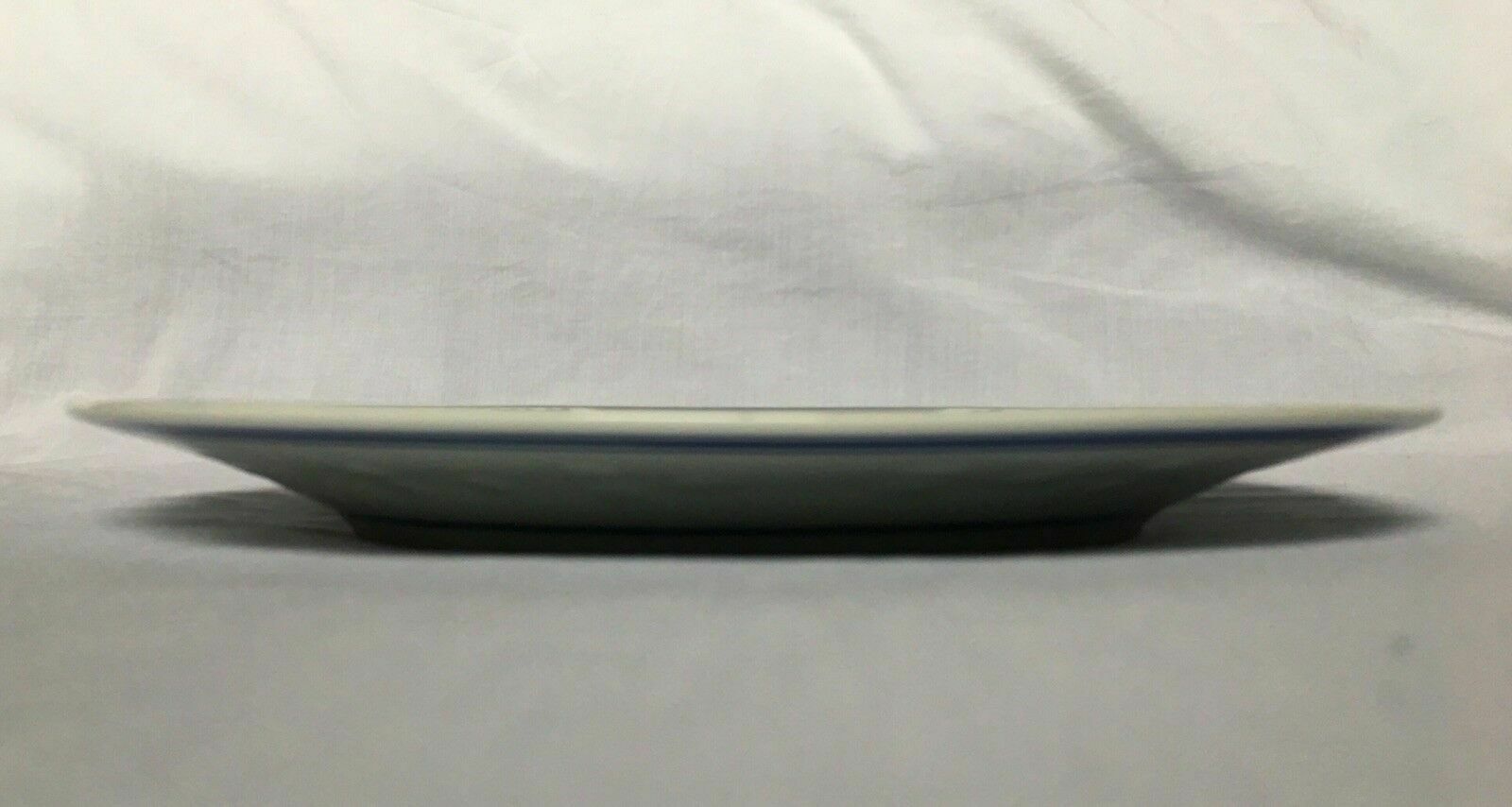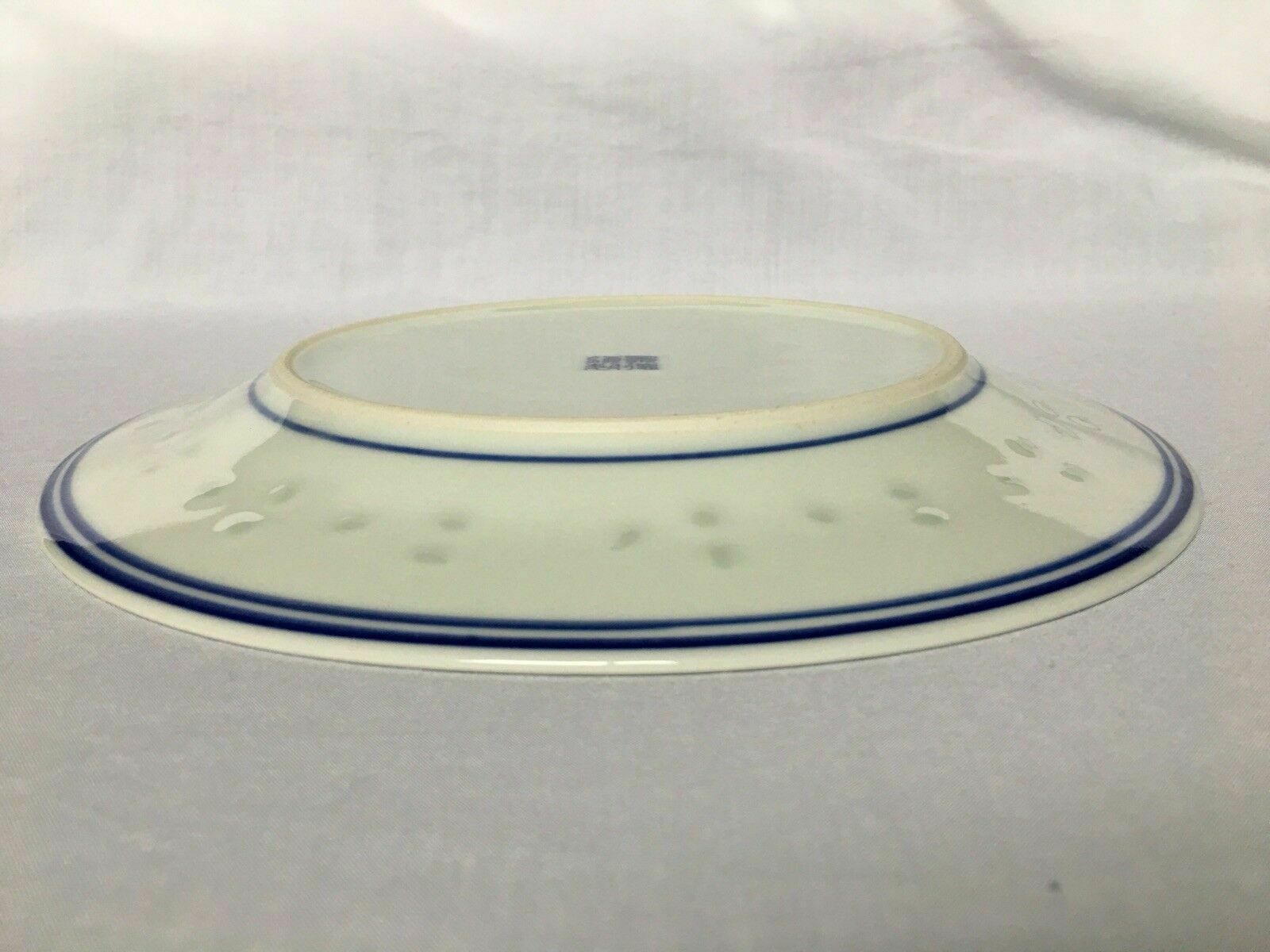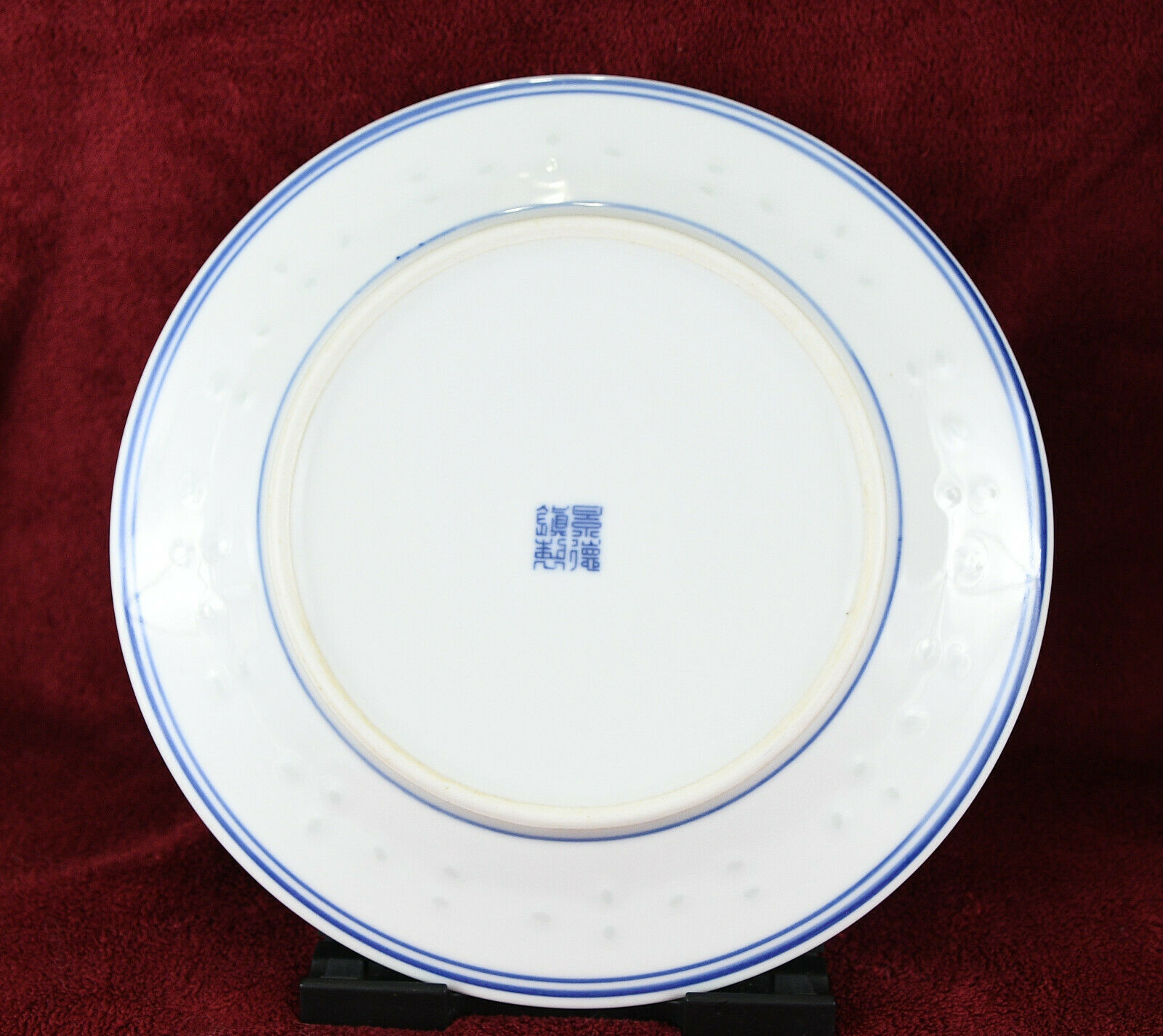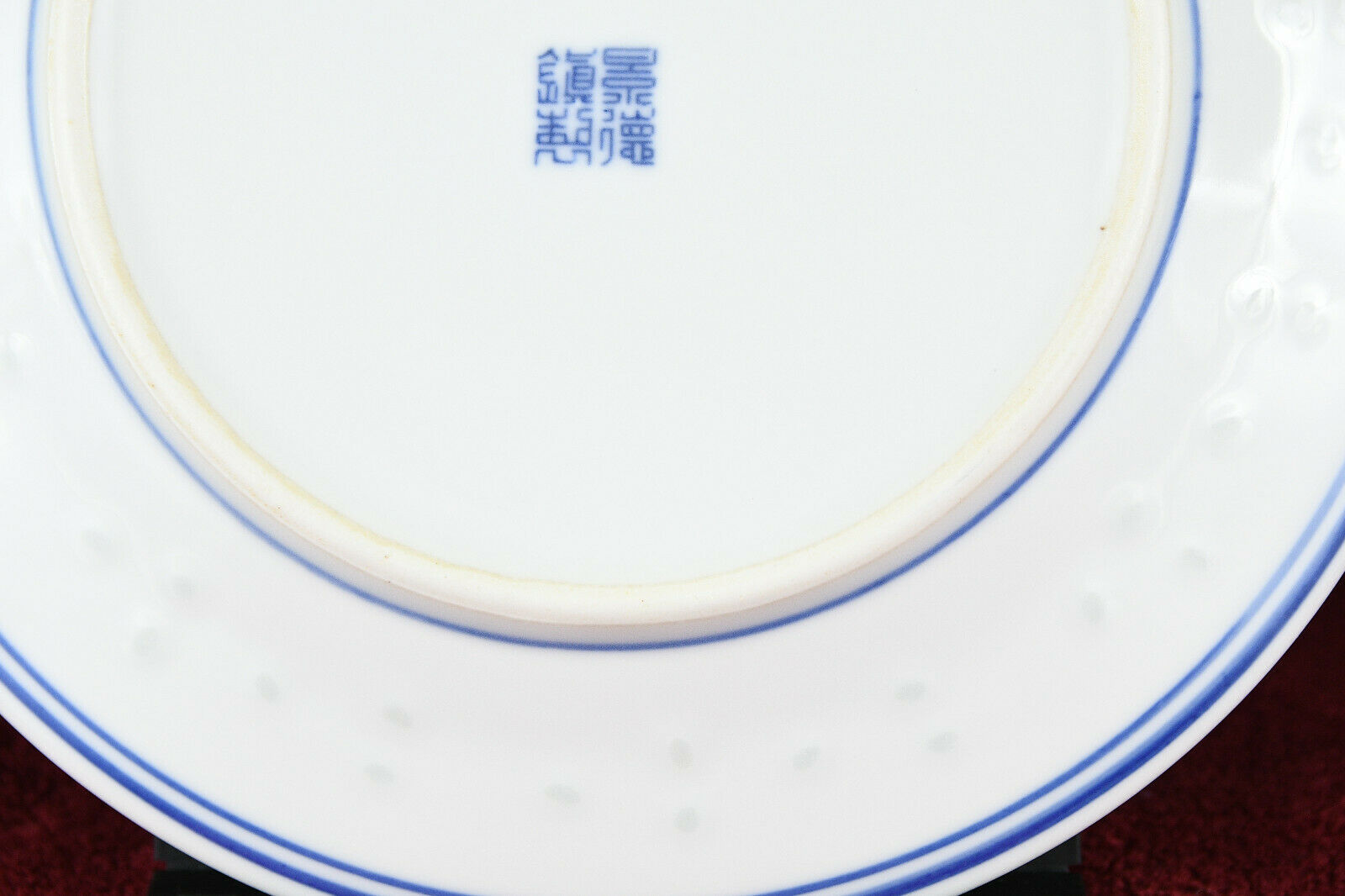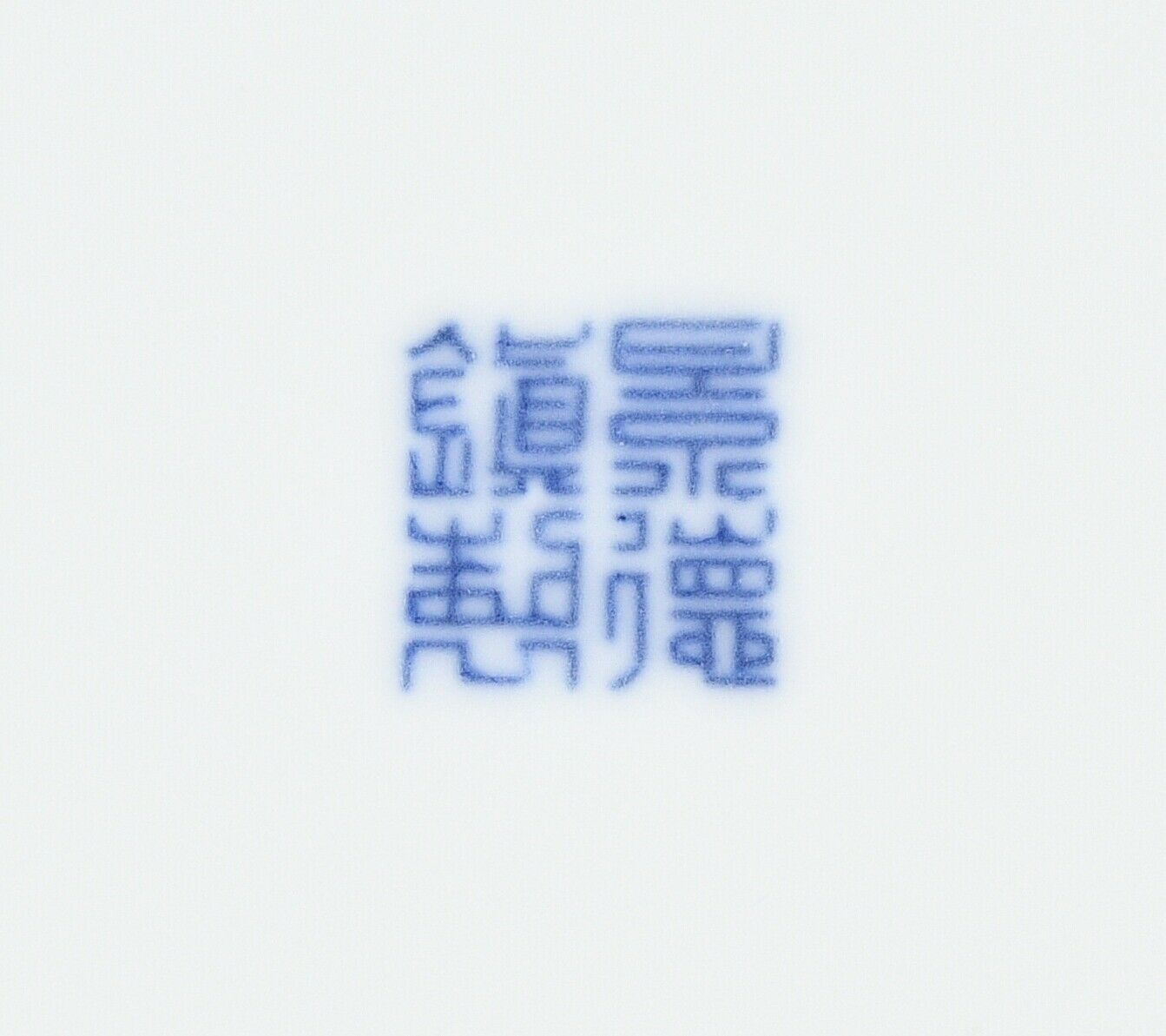-40%
Vintage Chinese Jingdezhen Zhi Rice Grain Blue White Porcelain Plate 1950 - 1970
$ 6.33
- Description
- Size Guide
Description
Vintage China blue white rice grain porcelain plate marked “Jingdezhen Zhi”.This plate is in excellent condition with no chips or cracks.
Dimensions:
Has a diameter of 9”.
History Of “Jingdezhen Zhi”.
From the mid-14th century, Jingdezhen began to mass-produce underglaze blue porcelain, whose development it pioneered, making it "one of the world's earliest industrial towns".
Much of this was for export, and other styles were produced for the Chinese market. Elaborately-painted wares were not in the traditional court taste, but they evidently came to be accepted. The large round serving-plates, from 40 cm across, which are now among the most valued pieces, reflect the needs of Middle Eastern rather than Chinese food service, which generally uses large numbers of smaller and deeper bowls, then as now.
Wares for export also often had thicker bodies, to reduce breakages on long travels to the export markets. In early periods, the markets receiving porcelain direct from China included Japan, all of
South-East Asia
, and much of the
Islamic world
, but did not include Europe on a regular basis. Until the 17th century, Europe normally only received porcelain via the Islamic world.
The blue pigment was derived from cobalt oxide, which had been imported sporadically from Persia in earlier periods. From the 14th century regular imports of the pigment were obtained from Persia. The cobalt was ground and mixed with a medium, then painted onto the dried bodies of the pots, which were then glazed and fired. At a later date a source of cobalt was found within China; this differed from the Persian ore in the proportion of associated manganese. The colour on the fired pots was a grey-blue rather than a pure blue. By mixing three parts Persian ore to two parts Chinese a rich and soft blue was produced, which became labelled as 'Sumatran' or 'Muhammadan' blue.
One of the largest intact early collections of exported Chinese porcelain was at the
Ardabil Shrine
, and is now in the
National Museum of Iran
. This has 805 pieces of porcelain, donated by
Shah Abbas I
in 1607–1608, from the Persian royal collection. Most were made in Jingdezhen, and they covered the full period of blue and white wares to that point, with some nearly 300 years old when donated.
[40]
The largely intact Ottoman collection is mostly in
Topkapi Palace
.
The restriction of painted subjects to the combination of abstract geometrical patterns, plant-forms, and animals had begun to end during the first half of the 15th century, as human figures, landscape scenes and other subjects began to appear. In the best wares, these designs were supplied by court artists and reflected contemporary painting and other media. This trend continued in
Transitional porcelain
, produced for a period up to 1683 at the end of the Ming dynasty, and the later blue and white wares of the
Kangxi reign
are the final phase in the artistic development of blue and white, with superb technical quality in the best objects, and larger images, flexibly treated, on a wide variety of subjects.
Tianqi porcelain
is a type of relatively informal ware, largely destined for the Japanese market, made at Jingdezhen in the 17th century.
Kraak ware
is a type of Jingdezhen export porcelain produced mainly during the
Wanli
reign (1573–1620), but also in the remaining two Ming reigns. It was among the first Chinese ware to arrive in Europe in mass quantities. Strictly defined, it "is distinguished by the arrangement of its ornament into panels; these usually radiate to a bracketed rim notorious for its liability to chip". It was mostly made as "deep bowls and wide dishes", decorated with motifs from nature, in a style not used on wares for the domestic Chinese market.
